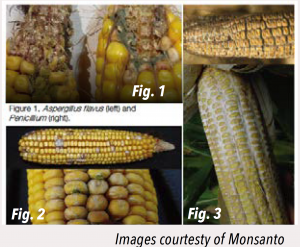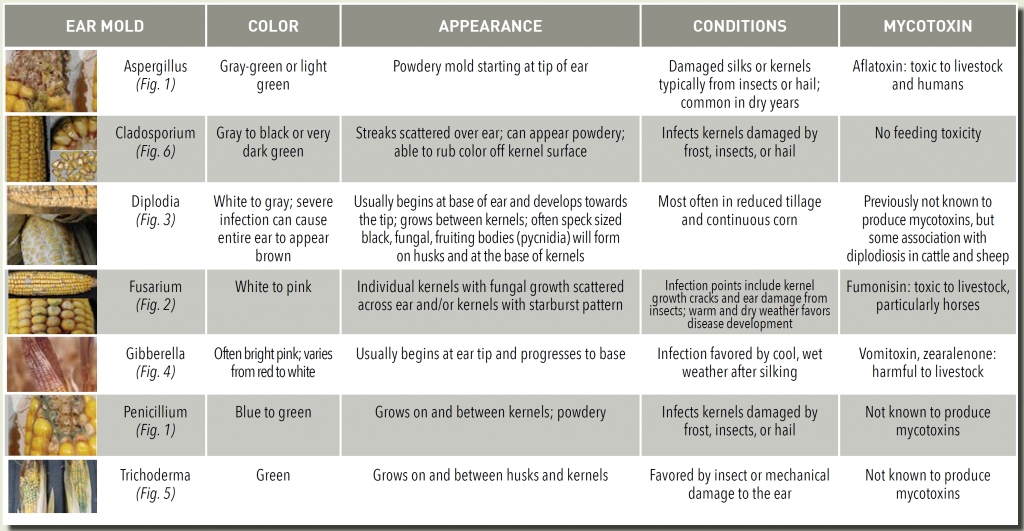TIPS FOR MANAGING EAR ROT
 Ear rot has been present in some corn fields that were harvested this year. These diseases can reduce the quantity and quality of the corn being harvested, and they can also produce mycotoxins that might be harmful to livestock and even humans. Lastly, they can continue to cause problems in stored grain unless it is closely monitored and maintained in the best possible condition.
Ear rot has been present in some corn fields that were harvested this year. These diseases can reduce the quantity and quality of the corn being harvested, and they can also produce mycotoxins that might be harmful to livestock and even humans. Lastly, they can continue to cause problems in stored grain unless it is closely monitored and maintained in the best possible condition.
Scouting fields prior to harvest is key to avoiding situations caused by mold. A pre-harvest field check can help farmers to determine: (1) if ear mold is present; (2) what type of mold is present; and (3) how severe the infestation is.
One method you can use when scouting fields for ear rots is to tear back the husks on 100 plants scattered randomly throughout the field. If you find 10% or more of the ears have mold on 25% or more of the ear, then that field should be harvested immediately and dried to at least 15% moisture. (NOTE: If you plan to turn a claim in for that field to your crop insurance provider, do that before harvesting. The insurance adjuster may need to see proof of the ear rots in the field as opposed to just seeing it in the stored grain.)
Samples of that grain should be tested to see what mycotoxins, if any, are present. You should then consult with someone like an extension specialist or veterinarian to decide the best method of using that grain.
To help determine which molds might be present in your fields, check out the table below:
Corn ear rots and molds are present every year, but the severity and type of infestation is highly weather dependent and greatly depends on the region where the farm is located. Fungal pathogens that cause ear rots will remain in the soil for several years. Crop rotation and heavy tillage may help reduce spore survival. Planting hybrids with traits that provide above-ground insect protection and reduce ear damage might also be beneficial.
 If you browse online for other ear mold management practices, you will see it’s suggested to plant hybrids with known tolerance to these diseases. Unfortunately, most companies do very little screening for ear mold pathogens simply because they are so varied and the instances of severe infestations are so rare. In the case of corn ear rots, the best offense is the best defense! Make time to scout each field for ear rots before harvest.
If you browse online for other ear mold management practices, you will see it’s suggested to plant hybrids with known tolerance to these diseases. Unfortunately, most companies do very little screening for ear mold pathogens simply because they are so varied and the instances of severe infestations are so rare. In the case of corn ear rots, the best offense is the best defense! Make time to scout each field for ear rots before harvest.
